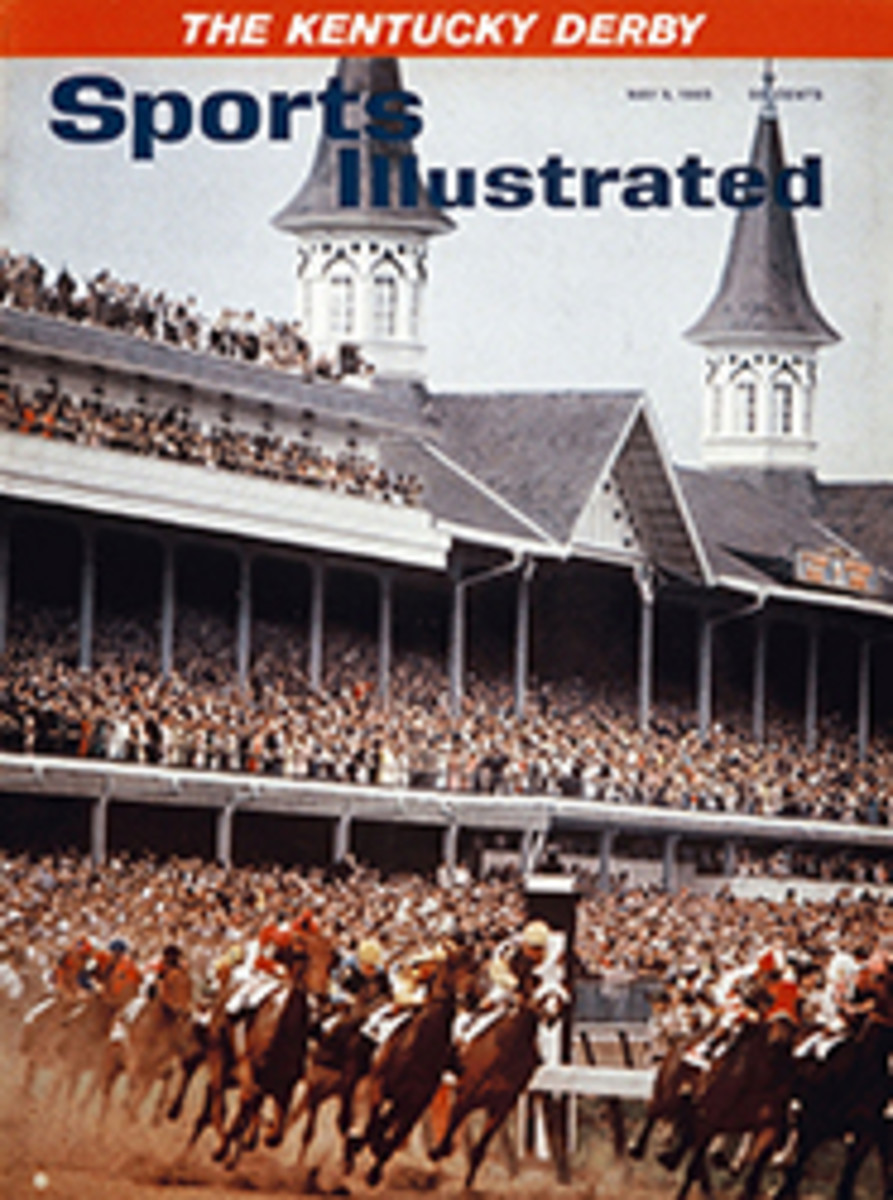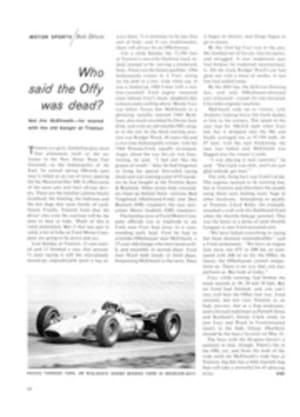
A race in king-size dinghies
Intercollegiate sailboat racing is a sport that is usually pursued in 10- to 12-foot dinghies—tippy cockleshells that hold two, or at best three, sailors and carry a handkerchief-sized scrap of Dacron on their single masts. Nevertheless, college competition has produced some of the best racing sailors in the country, and some 80 of them got a chance to prove it on Chesapeake Bay two weeks ago when the U.S. Naval Academy served as host for the first annual John F. Kennedy Memorial Regatta. Crews from both coasts, from Florida and from the Great Lakes were there to compete against each other in a unique series of three round-the-buoys races. The "dinghies" they raced in, however, were no little 10-footers but relatively huge 44-foot ocean-racing yawls.
Actually nobody but the U.S. Navy could have staged such a race, because nobody but Uncle Sam, in all likelihood, is rich enough to have a one-design fleet of such proportions in his private anchorage. Starting with three boats, designed and built by Luders in 1939 at a cost to U.S. taxpayers of $13,000 apiece, Navy's fleet of yawls now numbers 12—nine wood, three fiber glass—all virtually identical, except the glass are auxiliary-powered, the wood are not.
There is an old saying that anyone who can sail a dinghy can sail anything, but there is considerable difference between handling a boat with two masts and a thousand square feet of working sail and a boat spreading a mere 60 feet. Understandably, the Navy was pretty careful about checking out the sailors who would race its expensive toys around the bay. First off, their qualifications were examined by whatever regional branch of the nationwide Intercollegiate Yacht Racing Association their college belonged to. And as a final check, the Navy put an observer aboard each boat with the power to take command in mid-race if need be.
Much as the taxpayers might appreciate these precautions, they were not entirely necessary. Each collegiate skipper was as careful as the Navy itself to choose experienced hands just to give him a better chance in the race. Harvard's Ned Butler selected his crew with the care of a Carleton Mitchell getting set for Bermuda. A topflight small-boat sailor, Butler himself has a wealth of blue-water experience, including two Bermuda Races. Of the nine crewmen who served under him one, Butler's roommate, Bill Cabeen, has two Honolulu races behind him, plus a pair of Bermuda Races; another, Kenny Burns, Butler's fore-deck boss, served aboard Ted Hood's 12-meter Nefertiti last year as No. 2 foredeck man.
Butler didn't pick any crewmen for their skill in dinghies alone. "It's a matter of how a person reacts on a big boat," he explained. "No matter how good he may be, a dinghy sailor does not know the little tricks about a big boat—where to sweat on a line to get maximum effect, for instance."
Most of the college sailors in the other crews had also had time on ocean-racing boats. Although he is a Snipe champion, Scott Allan, the 18-year-old skipper from the University of Southern California, has done a lot of racing on his father's ocean racers Holiday and Holiday Too. James (Windy) Sherry, who skippered Detroit's Wayne State crew, has sailed in the Mackinac race and crewed aboard 50-footers. The crews from the University of Michigan, Babson Institute, Florida State, Tulane, Drexel Institute and Webb Institute in Glen Cove, Long Island, all listed ocean veterans in their rosters. And, of course, Navy's sailors feel as much at home in their big boats as they do in their bunks.
For this reason if no other, it surprised nobody when Navy crossed the line first in the first race of the series. Wayne State was second, Michigan third and Harvard a poor fourth. After the first race all the crews switched boats, and Harvard did a little better. Starting slowly but gaining momentum, she finished third. At the end of the second race, most of which was dogged by fluky winds and currents, Navy and Wayne State were tied for the lead at 18 points apiece, with Harvard and California each one point behind.
By the last day nerves were raw on all four boats, particularly the Navy entry. With a boatload of captains, admirals and commanders observing from the academy's big 71-foot yawl Royono, poor little Midshipman M.S. Davis knew that he must win, or sundry naval brass, all of whom had doubtless been itching to take the helm themselves, would want to know the reason why. He made a good start, along with USC, while Harvard sloughed off below the fleet, making her chances of doing anything seem as dismal as the sky.
At the windward mark, however, things changed considerably. Wayne was clearly out in front, with Babson a surprising second, Harvard third and Navy nowhere. At the second mark the order remained the same, but at the third, while Wayne and Babson had trouble getting their spinnakers down for the final windward leg, Harvard doused its chute smartly, rounded the mark and sailed into the lead. The order never changed after that, and at the end of the 15-mile course Harvard crossed the line to win the first Kennedy Cup.
For the assembled Kennedys on hand—Senator Ted, his wife loan, his sister Eunice Shriver and assorted children—it couldn't have happened to a nicer college, and as far as Harvardman Kennedy himself was concerned it would be only the first of many Kennedy Cup victories for Harvard. After presenting the silver cup to Skipper Butler in his late brother's name, the Senator nodded at his obviously pregnant sister, a champion Hyannisport sailor herself. "Eunice here," he told the crowd, "is about to give birth to the skipper who will win this cup again 18 years from now."
PHOTO

